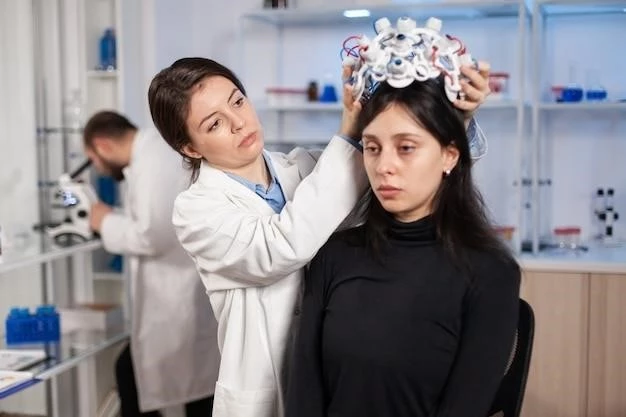Introduction to Microphthalmia Mental Deficiency
Syndromic microphthalmia is a rare congenital anomaly characterized by small eyes, often accompanied by non-ocular malformations. It can be caused by genetic mutations related to embryonic craniofacial development.
Syndromic Microphthalmia
Syndromic microphthalmia, a rare congenital anomaly, involves microphthalmia and non-ocular malformations. Genetic mutations linked to craniofacial development play a key role. Studies suggest a relationship between microphthalmia and mental deficiency.
Microphthalmia features small eyes due to underdevelopment, distinct from anophthalmia, where eyes are absent. Syndromic cases may include hypotonia, spastic diplegia, microcephaly, cataracts, and mental retardation along with craniofacial abnormalities. Genetic factors and environmental influences can contribute to this condition.
Research supports associations between microphthalmia and mental deficiency. Surveillance for developmental delays and early interventions are critical for effective management. Microphthalmia’s impact extends beyond ocular anomalies, affecting various aspects of an individual’s wellbeing.
Sex-linked microphthalmia and mental deficiency have been explored, shedding light on the genetic underpinnings of this condition. Understanding the molecular mechanisms of microphthalmia can lead to improved diagnostic methods and interventions for affected individuals.
Recognizing the signs and symptoms associated with microphthalmia and mental deficiency is crucial for early detection and management. Continued research contributes to the advancement of medical interventions and support strategies for individuals with these complex conditions.
Genetic Causes and Classification of Syndromic Microphthalmia
Syndromic microphthalmia is a rare congenital anomaly characterized by microphthalmia along with non-ocular malformations. Genetic mutations related to embryonic craniofacial development play a crucial role. Syndromic microphthalmia is typically classified based on the underlying genetic causes.
Genetic Mutations Related to Embryonic Craniofacial Development
Syndromic microphthalmia is often associated with genetic mutations impacting embryonic craniofacial development. These mutations are key contributors to the complex phenotypes observed in individuals with microphthalmia and mental deficiency. Understanding the genetic basis of these conditions can aid in targeted interventions and management strategies.
Studies suggest a correlation between specific genetic mutations affecting craniofacial development and the manifestation of syndromic microphthalmia. These mutations may disrupt normal embryonic processes, leading to a spectrum of ocular and neurodevelopmental abnormalities. Through genetic classification, researchers aim to elucidate the underlying mechanisms driving these rare congenital anomalies.
Genetic analyses have identified various gene mutations linked to syndromic microphthalmia, shedding light on the intricate genetic landscape influencing the co-occurrence of ocular malformations and mental deficiency. The classification of these mutations provides valuable insights into disease prognosis and potential therapeutic targets.
Exploring the genetic underpinnings of syndromic microphthalmia unveils the intricate network of genes involved in embryonic craniofacial development. By identifying specific genetic abnormalities, clinicians and researchers can tailor diagnostic and therapeutic approaches to address the complex needs of individuals affected by this rare condition.
Clinical Presentation of Microphthalmia Mental Deficiency
Microphthalmia, a congenital ocular anomaly, often presents with small eyes and non-ocular malformations. The condition can be associated with symptoms like mental deficiency, spasticity, and seizures, impacting individuals’ overall health.
Common Symptoms Associated with Microphthalmia and Mental Deficiency
The common symptoms linked to microphthalmia and mental deficiency include small eyes, mental retardation, spasticity, corneal clouding, and seizures. Patients may exhibit a range of ocular and neurodevelopmental abnormalities, requiring comprehensive management strategies to address their complex healthcare needs.
Genetic factors, prenatal exposures, and environmental triggers may contribute to the manifestation of these symptoms, emphasizing the importance of early detection and multidisciplinary care. Understanding the correlation between microphthalmia and mental deficiency symptoms is crucial for tailored interventions and support systems to enhance the quality of life for affected individuals.
Identification and monitoring of these symptoms play a key role in diagnosing and managing individuals with microphthalmia and associated mental deficiency. Collaborative efforts between healthcare providers, genetic counselors, and specialists are essential to optimize treatment plans and improve outcomes for patients with this rare condition.
Research continues to explore the underlying mechanisms driving the co-occurrence of microphthalmia and mental deficiency, aiming to uncover novel insights for targeted therapies and personalized care approaches. By addressing both ocular and neurological manifestations, healthcare professionals can offer holistic support to individuals affected by these complex conditions.
Studies explore genetic mutations in embryonic craniofacial development driving syndromic microphthalmia. Research delves into co-occurrence of microphthalmia and mental deficiency, uncovering crucial insights for diagnosis and management.
Research Findings on Microphthalmia Mental Deficiency
Studies delve into genetic mutations impacting embryonic craniofacial development, particularly in relation to syndromic microphthalmia. The research further explores the connection between microphthalmia and mental deficiency, offering valuable insights for diagnostic and management strategies.
Efficient management of microphthalmia and mental deficiency involves a multidisciplinary approach. Treatment strategies may include surgery, visual aids, educational interventions, and therapeutic support tailored to each individual’s needs.

Management and Treatment Approaches for Microphthalmia Mental Deficiency
Efficient management of microphthalmia and mental deficiency involves a comprehensive approach. Tailored treatment strategies encompass surgical interventions, visual aids, educational support, and specialized therapies to address the multifaceted needs of affected individuals.

Impact of Microphthalmia Mental Deficiency on Daily Life and Prognosis
The combination of microphthalmia and mental deficiency can have profound effects on daily functioning and long-term prognosis. Individuals may face challenges in various aspects of their lives, requiring tailored support to enhance their quality of life.
Long-Term Effects and Quality of Life Considerations for Individuals with Microphthalmia and Mental Deficiency
The long-term effects of microphthalmia and mental deficiency can significantly impact individuals’ daily lives and overall prognosis. Quality of life considerations include addressing challenges in cognitive development, visual impairments, motor skills, and social interactions. Comprehensive support and tailored interventions are essential to enhance the well-being and independence of individuals with these conditions.
